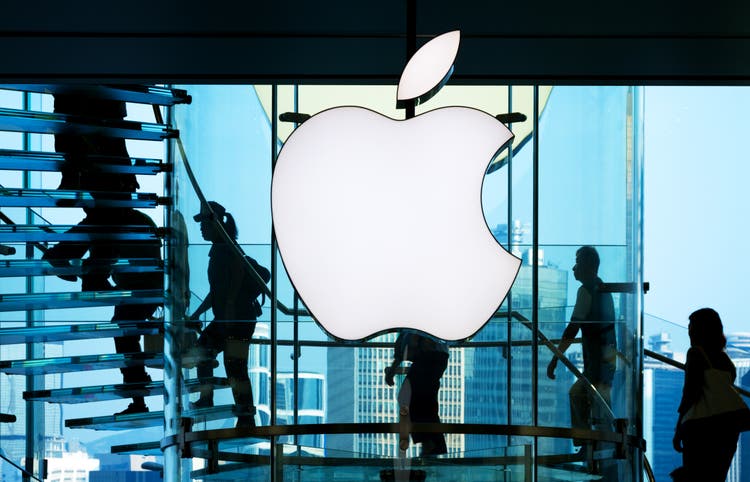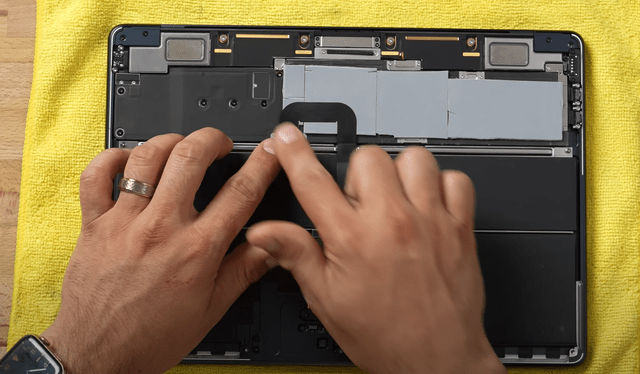Nikada/iStock Unreleased via Getty Images
A report out of Taiwan claims that Apple Inc. (NASDAQ:AAPL) will be the first customer to use Taiwan Semiconductor Manufacturing Company Limited’s (TSM) (“TSMC”) most advanced process, dubbed N3. What isn’t clear is when Apple will receive high volumes of N3 chips to use in its products. Some re-reporting of the Taiwanese Commercial Times article has Apple products with N3 chips coming out by the end of the year, but this is extremely doubtful.
Taiwan’s Commercial Times reports that Apple will be the first customer for TSMC’s “3 nm” process in the second half of the year
It stood to reason that Apple would get dibs on TSMC’s most advanced N3 process (also referred to as “3 nm”), since the two companies have worked so closely together for years. TSMC has been the sole supplier for Apple’s custom Silicon since the A10 Fusion processor of iPhone 7, released in September 2016. Apple has pumped a huge amount of revenue into the company, and since 2016 TSMC’s annual revenue has nearly doubled.
Thus, the report from Commercial Times that Apple would be the first customer for N3 came as no surprise. What did come as a surprise was the time frame for when Apple would begin receiving N3 chips (via Google translation from Chinese):
Apple is a priority customer for TSMC’s advanced manufacturing process. According to equipment manufacturers and Apple’s production chain, Apple will use TSMC’s 3nm wafers for the first time in the second half of the year. The first product may be the M2 Pro processor, and next year will include the new iPhone-specific A17. Application processors, as well as M2 and M3 series processors, will be imported into TSMC’s 3nm production.
This was surprising since I’ve been following TSMC’s progress on N3 closely as TSMC is part of the Rethink Technology Portfolio. After selling TSMC in May, I had bought back in (at a slight profit) on July 18 following their excellent Q2 earnings report.
TSMC wasn’t particularly encouraging about N3 progress, repeating the same message about it since the beginning of the year: N3 volume production would begin in the second half of the year. But they also stated that there would be no significant revenue from N3 until 2023, and that the N3 production ramp would extend into 2023.
Based on these statements, I’ve tended to assume that production wouldn’t start until Q4 and perhaps late in Q4 at that. Apple had clearly decided not to risk waiting for N3. The M2 in the new MacBook Air and 13″ MacBook Pro is fabricated on TSMC’s improved N5 (5 nm) process that it calls “N4.”
The expected launch of the iPhone 14 series on September 7 also suggests that Apple couldn’t wait for N3, and rumor has it that some of these will continue to use the A15 processor from iPhone 13. iPhone 14 Pros on the other had are expected to get a new A16 processor, but this will also likely be fabricated on N4.
Normally, Apple and TSMC would prefer to start a new production node with the smallest possible chips. In the early stages of a production ramp, defects per wafer are high and resultant chip yields are low. A smaller chip increases the number of chips per wafer and therefore the number of usable chips per wafer, even in the early stage.
Apple’s A series SOCs would be the logical place to start production on N3, and this is typically the way Apple has migrated to a new production node. But since Apple has already had to start production on A16 (probably starting last quarter) to support the early iPhone 14 launch, it kind of makes sense that Apple would start using N3 for an M2 series chip. Since M2 itself is already in production, that leaves an M2 Pro as the first to benefit from the N3 process.
But starting off with a relatively large chip is unusual, and it does call into question the veracity of the Commercial Times report. I might make more sense to do a mid-cycle refresh of iPhone 14 with A16 chips fabricated on N3, and then work up from there.
But Apple Insider jumps to some unfounded conclusions
Based on the Commercial Times report, Apple Insider speculated:
Apple’s 2022 MacBook Pros may pack new M2 Pro and M2 Max chipsets made with TSMC’s latest 3nm manufacturing process, according to a new report.
TSMC, the world’s largest semiconductor contract manufacturer, has been steadily building out its 3nm production processes. According to the Commercial Times, Apple could be the first customer to get its hands on those chips.
The report notes that Apple will use 3nm wafers for the first time in the second half of 2022, likely for its M2 Pro chipsets. Future releases built on the 3nm process could include the iPhone-specific A17 chipset, as well as a future third-generation of the M series.
That Apple could release new MacBook Pro models this year using the 3 nm M2 Pro isn’t really supportable based on the Commercial Times report and the timeline that TSMC has been indicating. Commercial Times didn’t say that Apple would receive sufficient quantities of N3 chips to support a product launch. Apple sells million of Macs globally every quarter.
Once production starts, I’m sure Apple will receive all sorts of chips off the line for test and evaluation. These might even number in the thousands of units. Apple often gets such quantities when dealing with a new technology, and make no mistake, N3 is a new technology. Apple will follow its usual course of careful test and evaluation for reliability, and that often requires thousands of test articles.
N3 has had a long and difficult gestation. It represents the absolute bleeding edge of semiconductor technology. Apple will proceed cautiously, which is why new products launched this year will almost certainly be based on chips fabricated on N4.
Why N3 is so important for Apple Silicon
I doubt that Apple wanted to use TSMC’s 5 nm (N5 and N4) process for three consecutive years for iPhone. I also doubt that Apple originally intended to use N4 for the Mac M2 processor. TSMC’s N3 development simply fell behind the Moore’s Law cadence, and there was nothing that Apple could do about it.
The M2 product launches underscore the importance of moving Apple Silicon to N3 as soon as possible. The M2 equipped 13″ MacBook Pro thermal throttles despite having a fan. The M2 equipped MacBook Air throttles even worse. In both cases, it appears that Apple seriously underestimated the amount of waste heat the M2 would produce.
It’s possible that in planning the architectural development of Apple Silicon, it was expected that the M2 generation would be made on TSMC’s N3 process. The M2 generation seems deliberately to have sacrificed a little efficiency in favor of performance. This would have been fine if the manufacturing process could take up the slack.
But N3 didn’t arrive in time for the M2 MacBooks launch, and N4 didn’t offer the efficiency gains Apple apparently counted on. As Apple continues to push the envelope for thin and light mobile devices, it needs N3 to facilitate this.
It’s perfectly understandable why Apple would want N3 for future M2 series processors. More efficient processors enable simpler thermal designs, including fanless designs, as well as reduces required battery size.
N3 will also be vital to further shrink circuitry and power requirements for Apple’s smallest devices, such as Watch, AirPods, and the expected augmented reality glasses.
Investor takeaways: looking at the impacts on Apple’s business of the late arrival of N3
It may not be apparent to Apple fans, customers, or investors, but the late arrival of N3 has kind of screwed things up for Apple this year. The iPhone 14 series is going to offer very incremental improvements on the processor front. M2’s performance improvement over M1 is only a little better than incremental, and thermal throttling is really inexcusable in the fan-equipped 13″ MacBook Pro.
Most reviewers have wondered why Apple bothered with the M2 13″ MacBook Pro, since it’s a years old design. They’ve also suggested, with justification, that the M1 Pro equipped 14″ MacBook Pro is a better value, and I agree.
The late arrival of N3 probably means lackluster sales for iPhone 14. One suspects that the early launch of iPhone 14 on September 7 is in order to pull as much iPhone revenue into the fiscal fourth quarter as possible. Apple will at least be able to finish the fiscal year in good shape, but I shudder to think what the December quarter is going to look like.
Also, Apple’s competitors such as Qualcomm (QCOM) are reportedly moving to TSMC, and they’ll be in position to use N3 for products to support the usual Android smartphone launches that occur around the time of Mobile World Congress in February. Unfortunately for Apple, the production ramp for N3 coincides nicely with the Android launch cycle.
Apple may be able to tie up N3 production next year with Apple Silicon for Mac, but TSMC has already indicated that it will provide adequate N3 production for all its customers. So I don’t have high hopes for iPhone 14 if it has to compete with Android phones using 3 nm processors
The prospects for iPhone 15, as well as other advanced Apple Silicon fabricated on N3 are much brighter. iPhone 15 will offer a much greater performance leap with enhanced AI and camera capabilities. Future Mac models such as the long-awaited Mac Pro, powered by M2 series processors, will offer performance and efficiency that is unequaled by any x86 processor.
In short, I think Apple’s long term prospects are excellent, but the N3 delay is going to mean rough going for iPhone 14, and rough going for Apple until more 3 nm silicon Macs arrive next year. I remain long Apple and rate it a Buy.




Be the first to comment